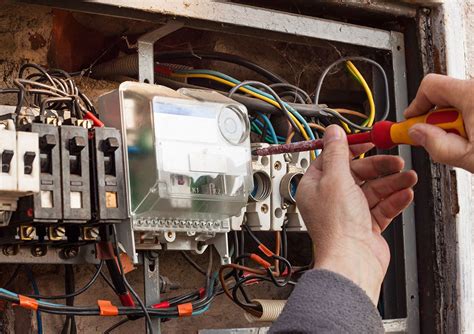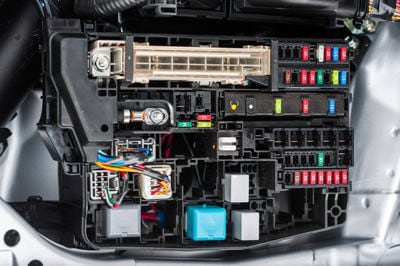Efficient electrical system troubleshooting for effective solutions.
Leading Tips for Effective Electrical System Troubleshooting
Repairing electrical systems calls for a methodical technique, grounded in a comprehensive understanding of electric principles and safety and security protocols. By acquainting oneself with circuit components, making use of crucial tools, and sticking to a structured analysis technique, specialists can successfully identify and solve issues. Nevertheless, the nuances of efficient repairing prolong past mere technical expertise; recognizing just how to document findings and focus on safety can substantially influence results. As we discover these critical aspects additionally, it comes to be clear that mastering this process is not simply useful but important for success in the area.
Understand the Essentials
Understanding the basics of electric systems is essential for effective troubleshooting, as a solid structure permits technicians to diagnose and resolve issues more successfully. A comprehensive understanding of electric principles, such as voltage, present, resistance, and power, is critical in recognizing the source of issues. Voltage is the electrical potential distinction that drives existing with a circuit, while resistance opposes the flow of current, influencing the general performance of the system.
Knowledge with circuit elements, including resistors, capacitors, diodes, and changes, is also extremely important. Each element plays a distinctive function in circuit behavior and can impact performance when malfunctioning. Furthermore, understanding collection and identical circuit setups is vital, as these arrangements influence the circulation of voltage and existing within the system.
Additionally, understanding of safety procedures is indispensable. Service technicians must recognize possible threats, such as shock and brief circuits, to execute secure troubleshooting techniques. By mastering these foundational concepts, service technicians improve their capability to conduct effective diagnostics and fixings, ultimately causing boosted performance and dependability of electric systems. This fundamental understanding is the cornerstone of effective fixing ventures.
Gather Necessary Devices
Reliable troubleshooting of electrical systems requires the best set of tools to identify and solve issues accurately. A well-appointed service technician can dramatically enhance efficiency and effectiveness in identifying troubles. Crucial devices include a multimeter, which measures voltage, present, and resistance, enabling precise evaluations of electric parts. Secure meters are likewise important for measuring existing without separating the circuit, making sure security and benefit.
In addition, protected hand tools such as screwdrivers, pliers, and cord strippers are essential for securely controling electric connections. It is also suggested to have a circuit tester available to verify the existence of voltage in outlets and cables. For more complicated systems, a thermal imaging camera can aid spot overheating parts, suggesting possible failings.

Adhere To a Systematic Technique
Having actually collected the suitable tools, the following action in troubleshooting electrical systems is to adhere to a methodical method. A methodical technique makes certain that specialists can identify faults efficiently and precisely, minimizing downtime and stopping unneeded repair work.
Begin by reviewing the system's schematic representations and requirements. Comprehending the style and functional specifications will certainly offer context for identifying problems. Next, isolate the issue location by more tips here making use of a procedure of elimination. This involves checking each part methodically, beginning with the power resource and functioning in the direction of the load.
Make use of testing tools, such as multimeters and oscilloscopes, to gather unbiased data regarding voltage, current, and resistance at different points within the system. This empirical proof will assist your troubleshooting initiatives and assist to confirm or get rid of prospective root causes of failing.
Furthermore, take into consideration ecological elements that might affect the system's performance, such as temperature level changes or wetness ingress. A detailed inspection of circuitry, connections, and parts will certainly make certain that all possibilities are made up.
Record Your Searchings For
Detailed paperwork is important in the repairing process of electric systems. Accurate records enhance the effectiveness of recognizing repeating concerns and help with interaction amongst team participants. Each searching for ought to be diligently noted, including signs and symptoms observed, tests carried out, and the end results of those examinations. electrical system troubleshooting. This practice not only help in understanding the origin of the problem however additionally offers as a reference for future repairing initiatives.

Furthermore, maintaining a log of components changed or repair services done is vital. This info supports inventory monitoring and can assist evaluate the longevity and integrity of certain elements.
Ultimately, the documents procedure ought to be comprehensive yet concise, making it possible for simple retrieval and testimonial - electrical system troubleshooting. By prioritizing comprehensive documentation, technicians can develop a useful understanding base that not just help in current troubleshooting yet likewise encourages future upkeep efforts, consequently enhancing total system integrity

Prioritize Precaution
Recognizing the intrinsic risks connected with electrical systems is vital for ensuring safety and security during troubleshooting. Electrical shock, burns, and tools read the article damage are just a few of the possible risks that professionals face. Focusing on safety and security steps is not just a lawful obligation however additionally a moral necessary that safeguards both the specialist and the surrounding atmosphere.
Prior to commencing any troubleshooting job, professionals should put on proper individual safety equipment (PPE), consisting of shielded handwear covers, shatterproof glass, and flame-resistant apparel. Guaranteeing that the job area is completely dry and free of clutter can substantially lower the risk of accidents. Moreover, it is important to de-energize circuits before beginning any work, verifying that they are not endure making use of a multimeter or voltage tester.
Developing clear interaction methods with group participants is additionally essential; this ensures that every person knows possible hazards and the status of the electric system being serviced. Having an emergency reaction plan in place can prove invaluable in the event of a case. By focusing on safety and security procedures, professionals can successfully reduce risks and cultivate a more secure work environment.
Conclusion
Reliable electric system fixing counts on a thorough understanding of essential principles and a systematic method. By gathering crucial tools, adhering to organized assessment techniques, and diligently documenting searchings for, the fixing procedure becomes extra effective and dependable. Focusing on precaution makes sure the well-being of individuals entailed and the stability of the investigate this site electric system. Executing these approaches will boost the repairing experience, bring about quicker resolutions and improved operational effectiveness in electrical systems.